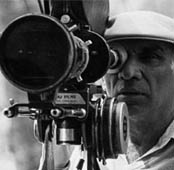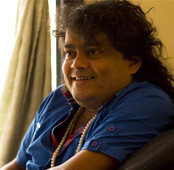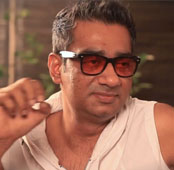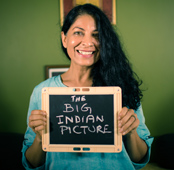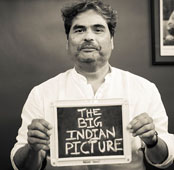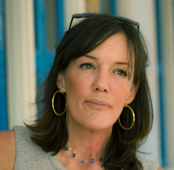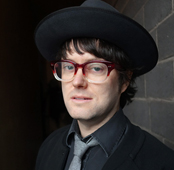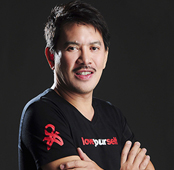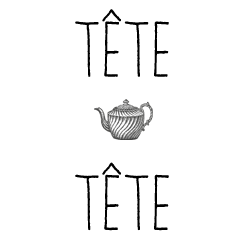
Sooni Taraporevala, 56, grew up in a large Parsi family in South Bombay, leading a fairly regular life until the day she found out she had been accepted to study in Harvard University as an undergraduate. She had applied for a lark and still cannot believe she got in. Harvard opened up a whole new world for her, sowing the seeds for the extraordinary work she was to do as a photographer and screenwriter later in life. It was also here that she met her collaborator in cinema, Mira Nair. After her post-graduation she moved back to Bombay without a plan, “for emotional reasons”. Back in her hometown, she began photographing her community, building an unparalleled body of photographic work compiled in several exhibitions and a book called Parsis : The Zoroastrians of India – A Photographic Journey. Furthermore, she brought to life a city slum in Salaam Bombay!, Mira Nair’s directorial debut. Since then she has written several films including her own debut feature as a director, Little Zizou. She wants to continue writing films, directing them and taking pictures. Also on the bucket list is a novel. Here is hoping the newly acquired and richly deserved Padma Shri will keep her motivated.
An edited transcript:
Okay, so we are going to start from, obviously the beginning. You grew up in Bombay?
I did.
What were those times like? When you think back to your childhood, what is it that stands out the most in your memory?
I grew up in a large extended family. Went to an all girl’s school, Queen Mary School next to Kennedy Bridge, and I guess what stands out is that I had a really happy childhood because I had a very large extended family. I am an only child myself but the extended family was pretty large and we did everything together, like large groups going for holidays and everything, so I think that stands out for me.
Did a lot of people live together as well?
Yes. I grew up with my parents, my grandparents, my father’s two brothers. Unmarried brothers.
Okay, okay. So that’s a fairly large group. And you went to college here as well?
I went to Xavier’s (St. Xavier’s College) for a few months and then I got very ill and could not attend college and then applied to a lot of American universities, got admitted and so never went back to Xavier’s.
How did Harvard happen?
Just by chance (laughs ). Fluke. Luck.
Yeah it was undergraduate studies. It was not very common for…
It was not at all common and in those days, you know, no undergraduates went, actually. And everyone severely discouraged me, not my family, but everyone else. The USCIS (United States Citizenship and Immigration Services), people who knew, they said, “Don’t be silly, you will never get in.” I just wanted to try and I just tried. I wrote to forty universities; that got narrowed down, down, down and then Harvard was the only one where I got admission as well as a scholarship.
Wow! Not a bad choice.
It was an amazing thing. I still can’t believe it actually, so many years later. I don’t know. It was one of those amazing things.
This was the seventies, right?
This was… yeah… I went in 1975.
What was Harvard like in 1975?
It was kind of… You know, it still had shades of the sixties when I was there, but kind of fading. I was there through the mid-seventies in America and the eighties. The eighties were very much an era of (Margaret) Thatcher and (Ronald) Reagan and all that, so in comparison the seventies were much more like the sixties.
At least the shadow of the sixties. What did you major in?
Literature but did a lot of film and photography courses as well.
Which is also very interesting to me because this is photography, this is not when digitization had come in such a big way. And you were at the centre of lot of intellectual discourse being in Harvard. What were the kind of conversations that were happening around photography, anything that you can remember? I am sure there was a lot going on because that was also the time when someone like Susan Sontag was writing On Photography. On Photography was published, actually, I think in 1975 or 76.
You know I never really took part in any intellectual conversations about photography.
Anything that you remember of how people were thinking of photography then or what was trendy?
What was prevalent in those days, I think, was street photography, documentary photography and it’s something that I also was very interested in and went into as opposed to commercial advertising or things that were set up. Which is also, I think, kind of leftover over of the sixties, because that was what was really prevalent in the sixties as well, that kind of photography. But my photographic education was very different in the sense that I took mostly independent courses so that I could use the facilities and the dark rooms to do my own work and projects. So I was always very…. I did a lot of independent studies which was basically fashioning my own projects and my own courses and I didn’t really learn photography, like, I never really learnt screenwriting. So I approached both of them kind of indirectly. And I was taught photography by a fellow student who was a stringer for The Boston Globe at the time, who was also a student at that time. And he taught me the basics— how to use the camera, how to print etc.
So you took more technical….
I took help for technical stuff and then developed my own kind of style and my own eye. I didn’t really do courses that taught me how to see or what to see.
What did Harvard leave you with? What was your takeaway from Harvard?
My takeaway was huge. It opened my eyes; it gave me an entire world. It’s impossible, actually, to describe it because I went from Xavier’s to doing one text in an entire year to doing courses like Shakespeare’s tragedies. All his tragedies in one semester, all his romances in the other semester. Three thousand courses to choose from. Every semester you had a week where you could shop for courses— that’s what it was called, it’s still called that. Sort of a mall, you went into lecture halls to see which courses you wanted to take. It was huge— the breadth of knowledge, what you could study, how intensely you could study it. It was really amazing.
What about after Harvard? You stayed on in the US for a bit after Harvard.
Yes. I then went to graduate school at NYU (New York University). I was, actually, at Columbia’s film school but I transferred out to NYU because NYU had a dark room and I did cinema studies at NYU and, again, did a lot of independent courses in the photo department.
Okay. I have read that your decision to come back to India was more an emotional one, but didn’t you want to stay on for a little longer in terms of your work? How did you reach that decision? I read somewhere you quoted, actually, a very beautiful (T.S.) Eliot verse in some interview about coming back, about making a journey and then coming back and discovering a place anew. What were your concerns? Were they purely emotional or were they also professional? I mean, at that time was it easy for someone like you to do what you wanted to do there in the US as well?
See the thing is Mira’s (Nair) father’s nickname for me was ‘rudderless ship’. I had no clear career goals or plans. Itwas purely an emotional decision. I didn’t even know what I was going to do because I graduated in cinema studies. I knew I didn’t want to teach and I didn’t want to be a film critic. Everything I did I did because I wanted to do it. I liked studying films but it had no practical kind of consequence in terms of… and I might add that I only did all that because I was on a scholarship. Had my parents been paying high fees I would have probably been more practical. But I was lucky that I didn’t have to be practical and that I could, actually, follow my heart and do what I wanted, which is what I did. But at the end of those two years I said, “Now what am I going to do?” And so photography was almost… being a professional photographer was almost like a default kind of thing to do. I love photography, it’s not that I didn’t, but to make it my career was because I didn’t want to teach and I didn’t want to be a critic. And I didn’t think I had the personality to be a filmmaker because at that time I thought, and rightly so, that filmmakers really have to go out there be extroverted, sell themselves, sell their projects, be kind of mini army generals putting together crew, putting together money. I just didn’t feel that I had that kind of personality and photography was just myself with one camera and a few lenses.
Tell me, you didn’t study screen writing, right?
No I didn’t study screen writing.
You mentioned that it was something you taught yourself, like photography in a lot of ways. How did you go about that? Did you read a lot of books on screen writing or…
No, no. Actually I didn’t even know that such a thing like the three act structure exists when I wrote Salaam Bombay!. My education as I said was very indirect but I am glad that it happened that way. For instance, literature taught me a lot of things about character, about point of view, about narrative. Studying films taught me a lot about how you construct a film, how you make a film and photography taught me about the visual world. So I approached screen writing through all those three strands when I wrote Salaam Bombay!.
Did you ever, at some point, go and read the different theories?
I did, and I am so glad that I didn’t start out that way because had I done it I would have not continued; because a lot of them are very confusing and very scary, in a way. Everything is so like, you have to reach your turning point at this page and that and that and that. It was all very complicated so I would not have made it as a screenwriter.
Have you ever referred to any of those theories?
Sometimes when I am stuck, I do but I have never actually gained much from it. Sometimes I wish that I had learnt it that way because sometimes it would be easier rather than trying to forge your own quirky path but it is what it is.
Mississippi Masala and Salaam Bombay!, I want you to talk a little bit about both the processes and how they might have been slightly different. I know that research was involved for both. And the director was the same. So tell me about how the processes were different for you.
Sorry, I will have to think about this because it has been so long… but I suppose when I wrote Mississippi Masala I was one film old but otherwise it was, I think, pretty much the same in the sense that Mira and I were working at it together. What was really different is that we had this huge star, Denzel (Washington). Sorry, actually there were lots of differences. What was also very different was that I was writing about the African American community and that I felt very responsible about getting it right and very scared about not getting it right. Though having said that, Salaam Bombay! had the same kind of responsibility of not being part of that world but representing that world and wanting to get it right.
Actually that was my next question. Salaam Bombay! is based in Bombay but it’s the Bombay right outside where you lived, where you grew up and this is completely different. Is it important for you as a writer to find certain connects to the story you are writing? Even if only in your head?
As a writer you always I think unconsciously or consciously, most often unconsciously, bring your personality and everything into it, into the character.
Of course. So where did you find your points of connects for both these?
With the characters. It would sound strange to say because I am so different from Jay. I am so different from Mina in Mississippi Masala but made her an only child like I am. When you are writing you bring things in from your own life. I think everyone kind of does that.
Did you work with Mira at the scripting stage, a lot, as well?
You know, we were friends before we started working together.
You guys met at Harvard, right?
Yeah we were both college students there. We were both undergrads there. We both got there, in this near miraculous way and we both couldn’t figure out how we had got there. So there were lots of points of contact, lots of similarities. We shared a lot of things. My process with her is very different than if it was a purely professional kind of thing with a director. We can’t rule out the friendship part of our lives together.
Which is probably the best part. Tell me what the success of Salaam Bombay! meant for you guys. It might have seemed like… you guys did make a great film but it was your first time and it was 25 years ago. How did the Oscar nomination happen?
I don’t know how it happened but it happened. At that time, because I was not a screenwriter and it was my first script, I didn’t really realize the import of what had happened. It didn’t really strike me as how amazing it was. It was fun and it was great but it was not like earth shattering like it would be now; because now I have been in the industry for 25 years, so if an Oscar nomination happened it would be a completely different deal than what it was in those days. In those days also nobody in India knew or cared about the Oscars. So Mira and I were there in L.A. and as Mira jokes, “The Indian government didn’t even send a telegram saying congratulations.” We were completely out there. Nobody knew. They used to broadcast the Oscars on Doordarshan early in the morning. Nobody knew, nobody watched. It is very different now, from when we were there.
How did you process that? How did you guys process that success?
Well, it gave me a career for one thing. Salaam Bombay! gave me a career. I was always really surprised. I knew it would do well, but not as well as it did.
Salaam Bombay! also gave you a lot of other things. Lifelong friendships, a lot of people in a production house you guys went on to form, the trust that came out of that. Tell me a little bit about those journeys.
The trust Salaam Baalak Trust is still running very successfully in Bombay and Delhi. Sorry, what else?
The friendships and the production house. Lot of people from the Jigri Dost production house are also from Salaam Bombay!.
Mulchand Dedhia who is the most famous gaffer in India now started out with Salaam Bombay!. A lot of people started out and stayed friends. The late Hassan Kutty became India’s most well known continuity person and assistant director; he started out with Salaam Bombay!. Lots of friendships— Dinaz Stafford, Anil Tejani. And when Dinaz and I started Jigri Dost Productions to make Little Zizou, my debut film a lot of the same people came on board and that was lovely.
Where did the name come from?
Jigri Dost Productions is actually a name that Mira was thinking of calling her production company; which then became Mirabai Films. I had always remembered it and so when it came time I said this is the name I want.
It’s a lovely name, I am glad you used it. You have worked on two adaptations.
Actually more.
Yeah, but I wanted to compare these two: The Namesake and Such a Long Journey. Both very popular books, read by lots and lots of people. I just want to understand how both these processes were different. The novels are different essentially. How are the processes different? How were the challenges different? Did you work with the writer in either?
I didn’t work with the writer in either. Both of them stayed away from the script process and actually went and came down for the filming, for part of it. Jhumpa (Lahiri) was there in the America part of it not the Calcutta part. Both of them were very hands off with the script and I didn’t really work with them at all. Such a Long Journey was my first adaptation and so I was very, very nervous about it, I had never done it before. It’s a very different book from The Namesake. It is full of incident, detail, plot, character. It is extremely dense and long and rich and amazing.
The Namesake is almost the polar opposite of that because it’s a very sparse sort of novel. Almost something that would be thought un-filmable.
Absolutely.The Namesake is much more interior. Though The Namesake also spans generations and continents.
And journeys.
So they both have a sweep but I remember Such a Long Journey being much, much harder to kind of condense into a 100 pages. The Namesake was hard for other reasons. Finding out whose story it was, how to convert something that’s so interior into something that’s exterior, that’s cinematic. So those were the challenges of The Namesake.
Can you remember couple of things you changed for both?
I don’t think I changed much in Such a Long Journey. The Namesake, a couple of scenes were added that were not in the book. One is, after his father dies, Gogol’s father dies, in the film he goes to this barber in a black neighbourhood and gets his head shaved. It’s a lovely scene because Mira put this great rap music over it and then he comes back and at the airport his mother and sister are surprised to see him with his shaved head and his mother says, “You didn’t have to” and he says, “I wanted to.” That scene was new and for me it was a way of showing that he had come round to the Indian side of his life, that he felt a certain regret and a certain kind of… almost feeling guilty about his father’s death because he had not been great to his parents. He had kind of favoured his girlfriend’s parents over his own so that scene was new. I can’t think of what else.
There was a place. You guys changed the place.
Mira wanted to make it New York instead of Boston. Yeah, that was changed. And of course, also she (the character of Ashima Ganguli) is a singer in the film where she is not in the book.
Why was that?
Again Mira wanted it so that we could do things with music and just give her more of a personality rather than just being a housewife.
You studied literature. You are familiar with so many books. Can you, at the top of your head, think of some book that you feel like, ‘That would be a really difficult novel to adapt’?
You know, some novels are really about style, about the way they are written. For example, The God of Small Things. You could make a film of it but you would just be making the plot, you would not be translating the language and so it would not really be a true… it would not really be in the spirit of the book. I think novels where the writing is as important as the story, the way it is written, those are harder to translate.
Can you think of a couple of adaptations that have worked for you, which you haven’t written? Can you think of any that you liked and any one that you feel like was couldn’t live up to the book?
I have seen a lot of adaptations which I think are good films but I haven’t necessarily read the books that they were adapted from. I loved The Last Emperor and I remember actually studying it because I was actually doing Such a Long Journey at that time and I actually watched that film and tried to study it to see how they went from past to present etc. I remember really liking that adaptation. Of course Pather Panchali is one of the most well known and most well beloved adaptations but again I haven’t read the original.
I want to come to Little Zizou, which given that you felt for the longest time that you did not have the personality of a filmmaker, you started to make a film quite late in your career. What was the first idea, what was the first seed of idea? How did you start with the…
You know I came back from shooting. Not shooting, I came back from visiting the set of The Namesake and I had some time on my hands and at that time there was a lot going on with fundamentalism around the world and it was (George W.) Bush’s America— there was Osama (bin Laden) on one side and Bush on the other side. And in my own little Parsi community, there was someone very junior to both of them, trying to aspire to that level. It was out of a sense of frustration at the state of the world that I started on this. I also had never embarked on a Parsi kind of film before because I thought that, you know, the reality could never really match up to whatever I would put on film. But when I started I said, “Hey, you know, actually…” and then I made a list of everyone who could act in this film and there were lots of people at that time and I actually wrote parts for specific actors, including my two kids. I wanted to address this business about patriarchy, about religious fundamentalism. But I wanted to do it with humour and I wanted to make a local tale have universal resonance. So those were the ideas that went into Little Zizou.
You’d already documented your community in a book, which we will come to later. Was this, part of the impulse for this, also a sort of documenting your community or just the ways of your community, not documenting your community itself?
No, no. I don’t think that I think I could have made the story in any other community. The reason I did it in my own was two reasons. One is that I think that basically first you have to look at yourself before you can point fingers at others and secondly, for my first film I wanted something I knew really well in terms of a world. I didn’t have the confidence to make a first film like Mira made Salaam Bombay! about a world that was actually out of our comfort zone. I didn’t want to do that because I didn’t think that I could. So I stuck to what I knew best, which was this community that I grew up in.
Tell me about where some of the characters came from?
I don’t know actually.
How many of them were amalgamations of people you knew and how many were direct translations of people you knew?
Well, the two antagonists, the newspaper editor and the religious nut were based on real people. My kids, I used a lot of their sibling rivalry and many things that I heard them say and do I put it into the script. Tknow Francorsi, one of the friends, I met him at a party and I loved the way he looked and when I found out he was half Parsi, half Italian that went into the script. The flight sim came out of a real situation, and I am not allowed to say the name but a dear friend had actually made a flight simulator like that. I think what was enjoyed most by the community was watching who was going to come next on screen.
That was practically enjoyed by even Bombayites who are not part of the community.
My husband used to say, because whoever I’d meet I would say, “I am making a film, you ought to be in my film.” My husband Firdaus would say, “Are you crazy? What kind of film are you making? ‘Anyone, come on, come on. Be in my film.’” Anyone and everyone was in it. It was made with a great deal of love by the crew and the cast and it really was a very pleasant and great experience making the film.
What I also found interesting was, Such a Long Journey. I know you didn’t make your films to portray the community in any way or to document the community but how would you say the portrayals of the community were different in Such a Long Journey and Little Zizou?
For one thing, I think, Such a Long Journey ‘s characters are more middle class. The building and everything is different from Little Zizou. I mean, no one is practicing black magic in Little Zizou . They are listening to ‘Hey Mambo’. Such a Long Journey , the main characters are about a family that has seen better times but are now facing hard times. Little Zizou is not about hard times, in that sense. It’s more about a psychological hard time that the characters go through. So I think that’s the main difference that I would say.
I want to start talking about the book now. The first question I want to ask you is that, I believe that the exhibition that you are having, an exhibition of your photographs on the community, I believe that your edit for that is slightly different from the book.
Yes it is.
Two things I heard you mention. One is that—but I want you to explain more because I didn’t understand what you meant— that this edit is a little more courageous, if you will. Basically what you said was that you were not afraid of courting controversy with this edit and the other was that you also said that this was more about contextualizing the community in the larger social space, which perhaps the book was not. I wanted you to talk a little about both.
You know, when I did the book there was no visual documentation about the Parsis at all and when I did the book, also the first edition, the kind of issues that are confronting us today were not really at the forefront. So my book was a kind of non controversial document of the community. Also when I did the book I felt responsible to portray not every aspect, but as wide a breadth as I could. My mentor Raghubir Singh who started me on this journey was very eager that I document as much as I could, that I don’t stay in one area, just make it as broad as possible. When I did the exhibition, I was not concerned about representing the community; I just wanted it to be a visual journey. That’s it. So I chose photographs that I liked visually and that I thought would look great on a wall and that I wanted to see blown up. So the show is really a photographer’s show. It’s not really a Parsi photographer’s show. It’s a photographer who photographs Parsis putting up a show. The book is really about the community. It’s not about me, it’s about the community.
Tell me how you started, a little bit on how did the journey begin to…
For the book?
Yeah. For the book.
It began a long time ago when I just came back from NYU. Before that I had come back, I had taken a leave of absence, I’d bought a camera and I was photographing. Among the pictures I took, I took pictures of my family— aunts, uncles, grandparents. I met Raghubir Singh in 1982 and he is the one who saw my pictures and said, “Concentrate on this because you have a feeling, you have unique access etc.” That’s the time when I started out actively working towards the book. Then Salaam Bombay! happened. I was a screenwriter. Photography kind of took a back seat. I got married and Firdaus, my husband, said—and his name is Firdaus Bativala, he hates it when people call him Firdaus Taraporevala. My husband said, “What are you doing with all this? Do something with it. It’s all going to just catch fungus and disintegrate if you don’t.” So then I started again putting it together and the first edition was published in 2000. Unfortunately, Raghubir Singh passed away a year before and so never saw the book, which I really regret. I hope he can see it from where ever he is because he was a huge, huge help to me.
Of course the access, the feeling is there and all of that but it can be very tricky for an artist to document their own community. It’s so common for photographers now to work with communities, they look for communities to work with. They go out find a community and document them. I am sure you have seen a lot of that work. For example, even someone like Ketaki Sheth, she has done work with the Siddi community. I could think of so many. Karan Kapoor has done work with the Anglo Indian community. How is it tricky in ways for you to be documenting your own community? How did you see your own journey vis-à-vis theirs?
I am just trying to think. I think the tricky part is not the photographing; it’s what you choose to show afterwards. That’s the tricky part. Because I have such an affectionate feeling for my own community, at heart, I really don’t want to offend anyone or hurt anyone. Other than that, I can’t think of any kind of land mines that I negotiated.
What about the access? You spoke about it, how much access did you get from your own community?
I got fantastic access. Everyone was very warm and welcoming and open.
And you also shot in the Agiarys.
You are allowed to actually, except you are not allowed to shoot the central fire which I didn’t ever do. At that time, I was also allowed to shoot at the Towers of Silence. Now it’s a complete no-no. I would never be allowed.
Why is that?
Now people have become very paranoid about Towers of Silence. It has become a very contentious issue and so now I would never be allowed. There are certain things that have divided the community very bitterly. One is the issue of who is or is not a Parsi, and the other is how we dispose of our departed. These are very emotive issues that people feel very strongly about one way or another.
What about the response from the community? Has it been uniformly…
Even when the book was out, because we are such a… (laughs ) you know we love to fight, we love to argue. So I was expecting anything after the book came out. But I was very pleasantly surprised that it was received so warmly and so well. Same with the exhibition.
Tell me something. What are some of your continuing concerns about the community and would you want to continue to document the community? If yes, in what ways would the journey be different? What else would you like to explore?
You know, I will always continue photographing. Whether it will become anything or not, for my own, for myself I will continue photographing because now I do have a document that spans 35 years so there would be no point to my stopping it. If I continue, it would become even richer. So I will always continue. I don’t know if I will do a book or show or anything else. I might just do it for myself. So that will continue. I don’t think I will make any more movies on Parsis, now I am going to move on.
Tell me something, what has being a writer brought to your photography? Do you feel like it helps you to build a narrative or tell your story, in any way?
No because I don’t do photo stories that well. All my photographs are like single shots but within those single shots, when I first started photographing I did them only for myself. I did these five pictures from India. I had printed them small and I wrote a story around each one of them. It wasn’t a photo story or photo essay. It was a single picture but within that single picture I created a story of the people in that picture. So in that way I can spin stories, imaginative stories of people in photographs. In that way maybe it helped but I don’t know how else.
You actually spoke a little bit about it earlier; how has photography helped in writing? The other way round.
A lot, in terms of screenwriting because it helps me to think visually which I think is essential if you are a screenwriter.
What about film making?
Same. I am not saying cinematography for film and still photography are same. Not at all. I could never operate a film camera but I do know my lenses and I do know what I want it to look like and I do know light and things like that.
How do you edit your work? Your photography work, how do you edit it? Do you take help from other people or do you take opinions from other people for your edits?
I pretty much do it on my own. Though of course Ketaki is a very old friend and a very dear friend, so I show her. I show my husband. But basically on my own. It’s just a question of getting it down, down, down. You start large and then you edit, and it’s smaller and then you edit and it’s smaller. That’s the way I do it. That’s the way I did the show.
Raghubir had a very studied approach to photography whereas someone like Raghu Rai always spoke about it being in the instinct of the moment and being very… where do you stand on this? What is your approach to photography?
I think more instinctual because Raghubir, you are right, it wasn’t a studied approach but Raghubir was very into that you need to know the history of photography, you need to know the traditions, you need to know (André) Kertész, you need to know (Eugène) Atget, you need to know this that and the other. Which I actually kind of glanced through but I don’t know it as well as I should. I instinctively like certain works and I instinctively don’t like certain work. That’s how I approach photography. The work that I instinctively liked very much and still do is the work of (Henri) Cartier-Bresson because for me the way he used the medium, for me, it’s the way… What is so unique about photography for me is that it can really capture a moment in a way that films can’t do and books, words can’t do. So for me that is the joy of photography, is capturing a moment and capturing it and rearranging the world to make it make sense stylistically. All of it comes together to form content, that is what I find exciting about photography.
Other than Bresson who are some of the photographers who have either influenced or..
Robert Frank’s The Americans. (Robert) Doisneau, who again did a lot of street work in Paris. Atget, Kertész, Brassaï. A lot of French photographers.
Have you ever, consciously, paid a tribute to any picture that you really loved or any photographer that you really loved with any of your work? Okay, I will give you an example. A friend of mine who is a photographer, went to shoot a film in Benaras and the first shot that he took was of a boy leaping from…
Like Raghubir?
Yes. So I was wondering if you’ve done tribute somewhere or emulated something.
I am too uneducated to do these tributes (laughs ).
Pictures are for the uneducated really.
Yeah. I would be thrilled if I could actually do a tribute to someone like Bresson, to Raghubir, but the situation hasn’t arisen.
I wanted you to name a couple of films that have either professionally or, simply, personally really moved you.
All the films of (Federico) Fellini. I saw his films when I was an undergraduate at Harvard and they really spoke to me, they really moved me, they really touched me. The characters I felt I knew, they were like Parsis to me. So, I would say Fellini.
I can see that. Little Zizou was about your concerns, of course you wanted to speak about the themes of the film, the community which was a second layer. I also felt like—I don’t know if you tried to do that—it was also a sort of portrait of a much lesser seen Bombay, at least to a viewer. I don’t know if that was the intention.
Yes, absolutely it was an intention that these were locations that were usually not seen on film.
Also the locations, which perhaps is great because they’ve been documented. I don’t know long they will look the way they look. You came to Bombay, it was an emotional decision but the city has changed so much in the last 20 odd years. Have you taken well to the way it’s been changing?
Not really. No.
What are your concerns about the city today?
I am concerned that we don’t have any sense of heritage, that we are breaking everything down for money and very soon there is going to be nothing left and these are buildings that once they are gone we are never going to get them back. I think it’s very unfortunate that even the ones that we say are heritage… It’s the most ridiculous thing that you keep a facade and then you will have some skyscraper shooting up from the middle of a beautiful old bungalow, that’s our idea of heritage. Everything is about development and everything is about money and its going to be a horribly ugly city in a very short time if we continue this way.
Do you think its character is changing in other ways as well, not just architecturally or externally but its character is changing internally as well?
I think so. From what I read in the papers, there is horrific stuff going on. I don’t know if it’s just Bombay or all over India. I don’t know, maybe you didn’t read about it when I was growing up but it just seems to be… every day is more horrific than the next in terms of what comes in our newspapers.
But it’s also interesting for us. Do you feel that in the last 20 years or 25 years… has there been any incident that you feel the city has changed around? In the way that 9/11 changed New York, in a lot of ways, not just the fact that the towers are no longer there but it’s a slightly different city.
Of course I think all the bombing and the riots completely changed the character of the city. The city that I grew up in was very different in terms of tolerance. I mean there were riots but now people have really closed themselves into their various communities. I grew up in a different city which was genuinely cosmopolitan, Bombay was.
What endures? What is something that survived through the years in Bombay?
All those gyms at Marine Lines. Parsi Gym, Hindu Gym, Islam Gym, Christian Gym, Catholic Gym.
I don’t know if they are the same anymore but they have survived. Final question— what’s next for you? Are you going to make another film, I know it’s not going to be about Parsis. You said that.
I am hoping to. I’ve been working on something for the past few years but it’s a very large subject, it would be a large film. I want to get the script right before I take it out. So that’s something I am doing. I am also writing something for Mira and an American studio, that I can’t talk about right now.
Have you found the personality of a filmmaker or have things changed?
I think I have adapted the personality to suit my own personality and I have realized that you don’t have to be a certain way to be a film maker, that’s what I have realized.
Also things have changed. A lot has changed for filmmakers. It’s not so difficult anymore.
That’s true. I have certainly become an addicted filmmaker and I certainly want to do it again.
I hope you make a lot of films. Tell me, I know I said that was the last question but I’ll ask you one more, why did you never think of writing a book?
I have thought of it and it’s something I want to do. It’s on my bucket list.
It’s on your bucket list. Will it be fiction or non-fiction?
Fiction. That’s a huge commitment. I don’t know how writers do it, it takes years and you’re completely isolated and you have to have so much confidence in what you are doing. At the end of it, it may never be published. It’s a very courageous thing to do.
But it’s also a fantastic journey. It’s a lonely journey but once you take a few steps, it’s also a fantastic journey. Well, I hope you write that book and make that film. Thank you.
Thank you.
Little Zizou by Sooni Taraporevala is available to watch free online on Hulu
(Geographical limitations apply, not available in the Indian sub-continent)
Sooni Taraporevala – TBIP Tête-à-Tête
InterviewJanuary 2014
 By Pragya Tiwari
By Pragya Tiwari
Pragya Tiwari is Editor-in-Chief at The Big Indian Picture.


